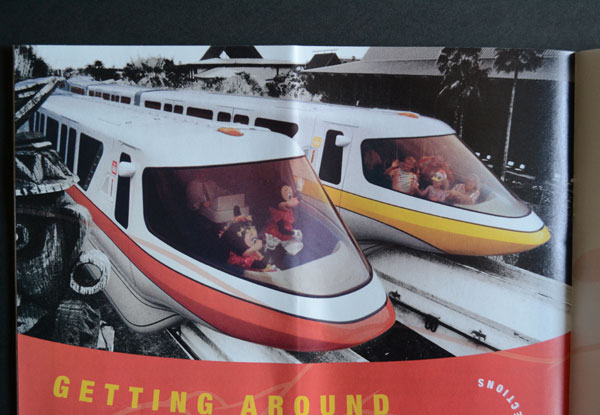
We’re all familiar with the power of the Disney marketing machine. No matter how much it costs, the allure of the Disney parks is too strong. Statements like “the happiest place on Earth just got happier” in vacation planning videos sound less ridiculous than they should. Disney makes sure we rarely forget about the parks. Their website promises the “coolest summer ever” with a giant photo of a happy Anna and Elsa in a parade.
Walt Disney World isn’t presented as a vacation option; it’s marketed as THE vacation destination. Everything is easy and magical, and nothing else will compare to this experience. It’s a fairy tale for the whole family. What interests me today isn’t today’s message but how it has changed. One way to notice the evolution is through marketing brochures. These materials were essential before the Internet age and were a rare way to show the details.
Back in the ‘80s and early ‘90s, Walt Disney World had a strong presence but was still becoming a juggernaut. It was designed as a leisure-time resort. There were no FastPasses or touring plans, and character greetings were simple. There were fewer hotel rooms and other activities; prices were lower. These facts played a role in how Disney marketed the parks. Families visited for a shorter time period and then headed to the beach.
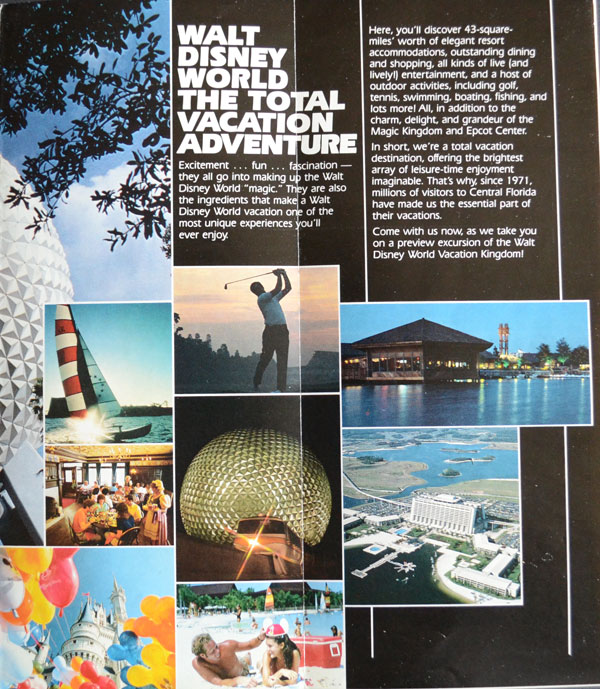
Leisure-time Disney Fun
Let’s journey back to the ancient time of marketing in 1984. Disney World was marketed as “The Total Vacation Adventure” next to photos of visitors golfing, riding sailboats, and just chilling on the beach. The brochure states, “In short, we’re a total vacation destination, offering the brightest array of leisure-time enjoyment imaginable.” It sounds relaxing! The copy defines magic differently; there’s no promise that you’ll dress up like a princess or ride Dumbo with Mickey.
This Walt Disney World focuses on fun, but without the hyperbole. Amazingly, the front pages include no pictures of Mickey. The largest photo presents the grand Spaceship Earth, with insets placing the castle, hotels, dining, and leisure on equal footing. Admittedly, the Magic Kingdom page does contain a small photo of Mickey and Minnie along with a shot of balloons. They’re mentioned briefly in the intro but aren’t given special treatment.
A statement like “your wishes and dreams from childhood fantasies come true in extraordinary ways” wouldn’t seem out of place now. However, the pictures offer equal weight to each land and spotlight different attractions. This approach matches how the Magic Kingdom functioned in the ‘80s. The attractions were the draw, while today’s website puts them on the same footing with dining and characters. The text-heavy visitors’ guide uses phrases like “you’ll be right in the middle” to stress the adventure.
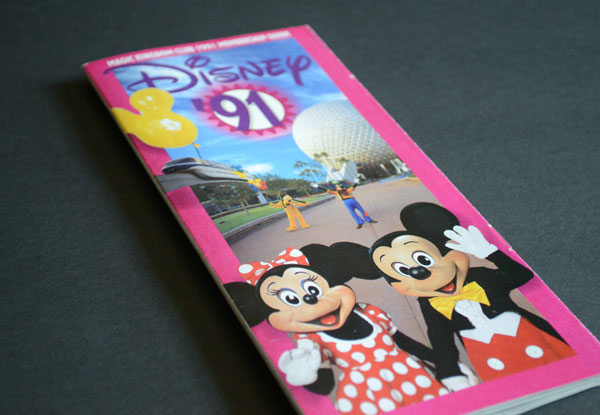
A Different Walt Disney World
There is a stark difference in the marketing seven years later for the 1991 guide to the Magic Kingdom Club — Disney’s long-defunct loyalty program (more on that in a future post!). The cover emphasizes Mickey and Minnie and puts Goofy and Pluto in the background. The Monorail and Spaceship Earth exist at a distance but hardly the focus. The pitch from Disney to its fans was not just about attractions.
The Magic Kingdom description spends the first paragraph on Mickey’s Starland (new at the time) and much of the second on the Disney Character Hit Parade. There are brief mentions of the Haunted Mansion, Pirates of the Caribbean, and Dreamflight (surprisingly), but the rest is characters. Under Eisner’s leadership, Disney recognized its real brand was not rides.
When EPCOT opened, it took center stage. The 1984 materials described it as a “Dazzling Disney Adventure” and even say “Walt Disney’s dream is a reality.” That’s interesting given the differences between the park and his vision of a real community. There is still little sense that Disney felt the need to apologize for its more educational park.
The 1984 book A Pictorial Souvenir of Walt Disney World describes EPCOT as “an unprecedented celebration of human ingenuity and achievement.” That is quite a statement. The hyperbole is a lot stronger than the description within the 2005 brochure included in the Walt Disney World welcome packet. EPCOT is then described as a place “where the magic of Disney touches the real world.” The contrast is fascinating.
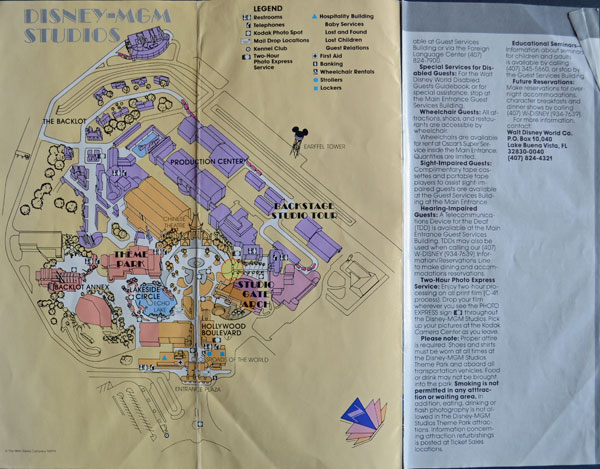
Hooray for Hollywood!
Disney’s Hollywood Studios opened in 1989 as the Disney/MGM Studios and was presented as a “working movie and television Production Center” within the brochure. The bold type reveals where Disney wanted our focus. They invited us to “go behind the scenes of a real motion picture studio”, and the copy follows that idea. This was prior to the opening of Sunset Boulevard, so the behind-the-scenes view was the draw.
The font size on the map gives the same emphasis to the Backstage Studio Tour and Theme Park sections, which is stunning. One reason for this move was the lack of attractions. The tour was several hours long and covered much of the time you would spend at the parks. It’s an intriguing look at just how different that park was and helps to explain today’s tonal issues.
The Studios’ current marketing is understandably different. The website stresses the adventure and doesn’t claim you’ll see behind the scenes. Disney essentially co-opted Universal’s “Ride the Movies!” slogan. The description says, “movie magic comes to life at Disney’s Hollywood Studios, awash in the glitz and glamour of Hollywood’s Golden Age.” The experience is the draw, not educational information. A big reason for the change is the difference in Hollywood. DVD extras have taken us behind the scenes, and many visitors don’t care about specifics. The magic is now the key.
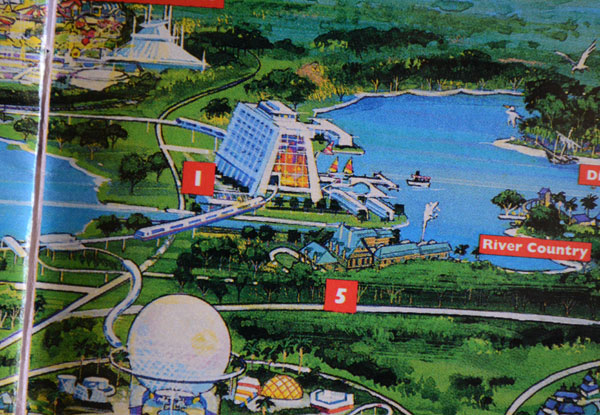
The Blessing of Size at Disney World?
It’s easy to criticize Disney for simplifying their ads, but they’re brilliant marketers. Walt Disney World is a massive resort with huge operating costs, and they must keep the visitors coming. When it was just the Magic Kingdom and a few resorts, describing everything was easy. It’s different today when you consider the complexity. Prices continue to rise, so it’s crucial to sell the one-of-a-kind experience. There are plenty of locations around the country to relax that don’t carry such a high price tag.
The challenge for Disney will be finding ways to keep drawing crowds, particularly without new attractions. It’s easy to sell a new Star Wars land; making a dessert party sound magical is something else. The evolution will continue as new technologies emerge, and Disney’s success depend on how its marketing adapts to a changing world.
Related Articles: Disney Marketing
The Naming Conundrum and Disney’s Hollywood Studios
Disneyland: Secrets, Stories & Magic
A Dream Called Walt Disney World
This post contains affiliate links. Making any purchase through those links supports this site. See full disclosure.



Leave a Reply